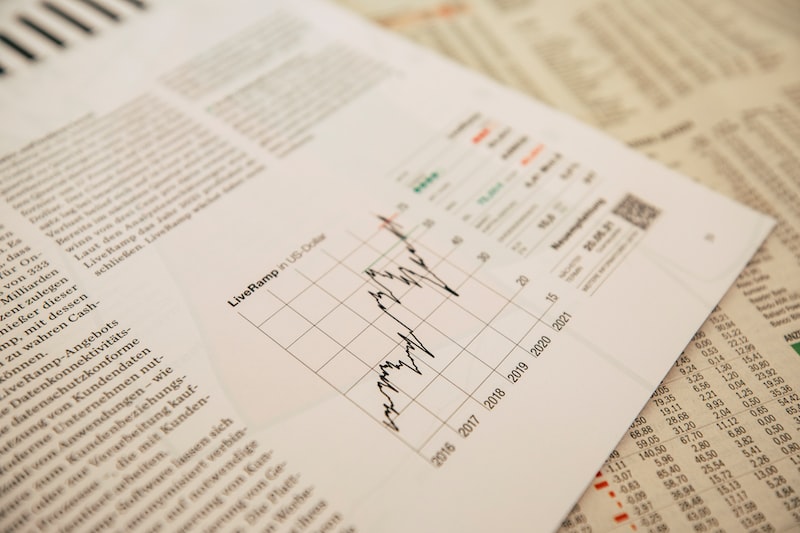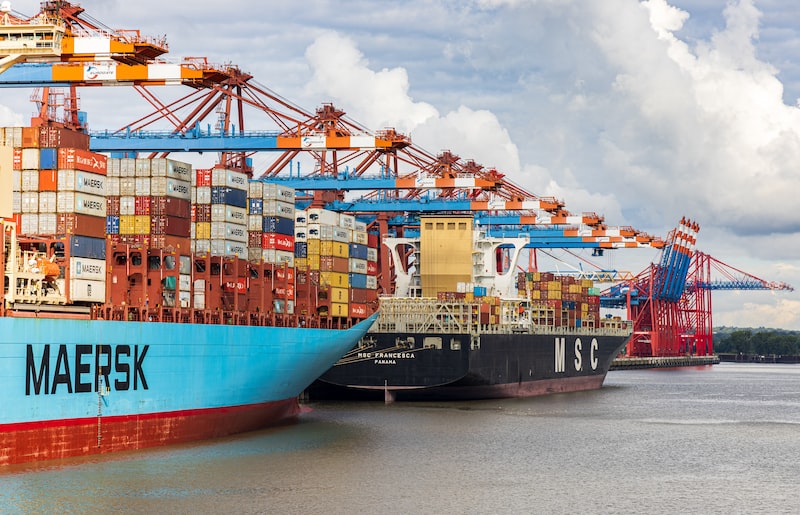Table of Contents
Have you ever wondered about the factors that shape the economic landscape? The economic environment plays a crucial role in determining the success or failure of businesses. In this article, we will dive into the components of the economic environment and provide you with some real-world examples to illustrate their significance.
First and foremost, let’s talk about the components of the economic environment. One of the key elements is the business cycle. Just like the seasons change, the economy goes through periods of expansion and contraction. During an expansionary phase, businesses flourish, consumer spending increases, and employment rises. Conversely, during a recession, the economy experiences a downturn, leading to reduced business activity and higher unemployment rates.
Another crucial component is fiscal policy. Governments use fiscal measures to influence the economy. This includes taxation, government spending, and budget allocation. For example, during an economic downturn, the government may lower taxes to encourage consumer spending and stimulate economic growth. On the other hand, during times of inflation, governments may increase taxes to curb excessive consumer spending and control inflationary pressures.
Monetary policy is another vital aspect of the economic environment. Central banks regulate the supply of money and credit in the economy to maintain price stability and promote economic growth. They do this by adjusting interest rates, which impact borrowing costs for businesses and individuals. When interest rates are low, borrowing becomes cheaper, encouraging investment and stimulating economic activity. Conversely, high interest rates discourage borrowing, which can help control inflation but may also slow down economic growth.
Now that we have explored the components of the economic environment, let’s look at some real-world examples. During the global financial crisis in 2008, many businesses suffered due to a sharp economic downturn. Unemployment rates surged, consumer spending declined, and governments implemented various fiscal and monetary measures to stabilize the economy.
In contrast, during periods of economic expansion, like the technology boom in the 1990s, businesses experienced rapid growth and innovation. Companies like Microsoft and Apple revolutionized the tech industry and redefined the global economic landscape.
Understanding the economic environment is essential for businesses and individuals alike. By analyzing its components and keeping a close eye on real-world examples, we can adapt our strategies and make informed decisions that align with the prevailing economic conditions.
Remember, the economic environment is constantly evolving, and staying abreast of its changes is critical for success. So, keep an eye on the business cycle,
fiscal policy, and monetary measures to navigate the ever-changing economic landscape effectively.Understanding the Economic Environment: Key Components and Real-World Examples
Have you ever wondered about the factors that shape our economic landscape? The economic environment is a dynamic and complex system that influences everything from business decisions to government policies. In this article, we will delve into the key components of the economic environment and provide real-world examples to help you grasp its significance.

One crucial component of the economic environment is the market structure. Markets can be categorized into various structures, such as perfect competition, monopolistic competition, oligopoly, and monopoly. Each structure has its unique characteristics, which impact pricing, competition, and consumer behavior. For instance, a perfect competition market, like the agricultural industry, features many small producers selling homogeneous products, while a monopoly market, such as a local utility provider, has a single dominant supplier with significant control over prices.
Another vital aspect is the economic indicators that reflect the overall health of an economy. These indicators include gross domestic product (GDP), inflation rate, unemployment rate, and consumer price index (CPI). They provide insights into the growth, stability, and purchasing power of a country. For instance, a high GDP growth rate indicates a robust economy, while a rising inflation rate erodes the value of money.
Furthermore, government policies play a pivotal role in shaping the economic environment. Fiscal policies, such as taxation and government spending, influence public finances and economic activities. Monetary policies, controlled by central banks, regulate interest rates and money supply to manage inflation and promote economic growth. For example, during an economic recession, the government may implement expansionary fiscal policies by reducing taxes and increasing spending to stimulate demand and encourage investment.
Real-world examples can help us understand the economic environment better. Take the case of the global financial crisis of 2008. The collapse of Lehman Brothers, a major investment bank, triggered a chain reaction that resulted in a severe economic downturn worldwide. Governments responded by implementing expansionary monetary policies, lowering interest rates, and injecting liquidity into the financial system to stabilize markets and restore confidence.
In summary, understanding the economic environment is crucial for individuals, businesses, and policymakers alike. By grasping the key components, such as market structures, economic indicators, and government policies, we can navigate the ever-changing economic landscape with greater insight and make informed decisions. So, let’s embark on this fascinating journey of unraveling the intricate workings of our economic world.
Unveiling the Dynamics of the Economic Environment: A Comprehensive Analysis
Have you ever wondered what drives the wheels of the economy? How do various factors interplay to shape our economic environment? In this article, we will embark on a comprehensive analysis uncovering the hidden dynamics that govern our economy. Prepare to be amazed as we delve into the intricate workings of this complex system.

At the core of any economy lies the delicate balance between supply and demand. These two forces constantly interact, influencing prices, production levels, and ultimately shaping the overall economic landscape. Picture it as a dance, where supply and demand move in harmony, guiding the ebb and flow of economic activity.
In addition to supply and demand, another crucial element is market competition. Think of it as a bustling marketplace, teeming with businesses vying for consumers’ attention. Competition fosters innovation and efficiency as companies strive to offer better products and services at competitive prices. This healthy rivalry benefits consumers by widening their choices and driving prices down.
However, the economic environment is not immune to external shocks. Various factors such as government policies, global events, and technological advancements can send ripples through the economy. Just like a ship navigating stormy waters, the economy must adapt to these changing conditions. For example, changes in interest rates can influence borrowing costs and investment decisions, while geopolitical tensions can disrupt international trade.
Moreover, demographic trends play a significant role in shaping the economic environment. The size, composition, and behavior of the population have far-reaching consequences. Imagine a puzzle, where each piece represents an individual or a group contributing to economic growth. Understanding these demographics helps policymakers tailor strategies to meet the needs of different segments of society.
It’s important to recognize that the economic environment is not a monolithic entity. It varies across countries, regions, and industries. Factors such as natural resources, infrastructure, political stability, and cultural norms create unique dynamics within each context. By comprehensively understanding these nuances, we can better appreciate the diversity and complexity of our global economy.
the economic environment is a multidimensional tapestry interwoven with various factors that shape its dynamics. From supply and demand to market competition, external shocks, demographic trends, and contextual variations, all intricately influence the economic landscape. By unraveling these complexities, we gain valuable insights into how our economy functions and evolves. So, let’s embark on this journey of discovery, ready to unlock the mysteries of the economic world around us.
From GDP to Inflation: Demystifying the Building Blocks of the Economic Environment
Have you ever wondered how the economy works? From the ups and downs of GDP to the mysterious effects of inflation, the economic environment can seem like a complex puzzle. But fear not! In this article, we will demystify these building blocks of the economic world and help you understand their significance.
Let’s start with GDP, or Gross Domestic Product. Simply put, GDP measures the total value of all goods and services produced within a country during a specific period. It is often used as an indicator of a nation’s economic health. When GDP is high, it means that businesses are thriving, people are spending, and the economy is growing. On the other hand, a low GDP indicates a sluggish economy. So, keeping an eye on GDP helps us gauge the overall economic performance of a country.
Now, onto inflation. Have you ever noticed how prices for goods and services tend to go up over time? That’s inflation at work. Inflation refers to the increase in the general level of prices, which reduces the purchasing power of money. A moderate level of inflation is generally considered healthy for the economy, as it encourages spending and investment. However, when inflation gets out of control, it can erode people’s savings and disrupt the stability of the economy.
The causes of inflation can vary, but one common factor is excessive demand relative to supply. When there is too much money chasing too few goods, prices tend to rise. Central banks play a crucial role in controlling inflation by adjusting interest rates and implementing monetary policies.
Understanding GDP and inflation is vital because they impact our daily lives. They affect everything from the cost of living to job opportunities. By monitoring these indicators, policymakers can make informed decisions to steer the economy in the right direction.

GDP and inflation are essential components of the economic environment. GDP reflects the overall output of a country’s economy, while inflation measures the rate at which prices are rising. Both indicators provide insights into the health and stability of an economy. So, the next time you hear about GDP or inflation on the news, you’ll have a better understanding of what they mean and their significance in our economic lives.
Exploring the Economic Ecosystem: An In-depth Look at Its Elements and Illustrations
Have you ever wondered about the intricate workings of the economic ecosystem? How different elements come together to create a dynamic environment that drives our economies and shapes our lives? In this article, we will take a deep dive into the economic ecosystem, examining its various components and providing real-world illustrations to enhance your understanding.
At the core of the economic ecosystem lies the concept of supply and demand. This fundamental principle governs the flow of goods, services, and resources in a market. When supply meets demand, it creates a delicate balance that sustains economic activities. Imagine a seesaw, where supply and demand are the two sides. When they are perfectly aligned, the seesaw remains balanced, resulting in stable prices and efficient allocation of resources.
One crucial element within the economic ecosystem is entrepreneurship. Entrepreneurs bring innovation and creativity to the table, identifying opportunities and taking risks to create new businesses or improve existing ones. They act as catalysts, driving economic growth and job creation. Think of entrepreneurs as the seeds that sprout into vibrant economic plants, nourishing the ecosystem with their fresh ideas and ventures.
In addition to entrepreneurship, government policies play a vital role in shaping the economic landscape. Governments enact regulations, tax policies, and fiscal measures that influence businesses and individuals’ decisions. These policies can either stimulate or inhibit economic activity. Picture the government as a gardener tending to the economic garden, pruning regulations and providing fertile ground for businesses to flourish.
Financial institutions form another important component of the economic ecosystem. Banks, credit unions, and other financial entities facilitate the flow of money between savers and borrowers. They provide access to capital, enabling businesses to expand, invest, and create employment opportunities. Consider financial institutions as the bloodstream of the economy, ensuring a smooth circulation of funds.
Moreover, international trade acts as a connective tissue, linking economies across the globe. Countries engage in trade to leverage their comparative advantages, exchanging goods and services to meet diverse needs. This interconnectedness fosters economic growth, as nations capitalize on their strengths while benefiting from the resources and expertise of others. Visualize international trade as a vast web, intertwining economies in a global dance of commerce.

As we conclude our exploration of the economic ecosystem, it becomes evident that its elements are interconnected and interdependent. Like gears in a well-oiled machine, each component plays a crucial role in maintaining a healthy and thriving economy. By understanding these elements and their illustrations, we gain insights into the complex web that underlies our economic system, empowering us to navigate its twists and turns with greater clarity.




